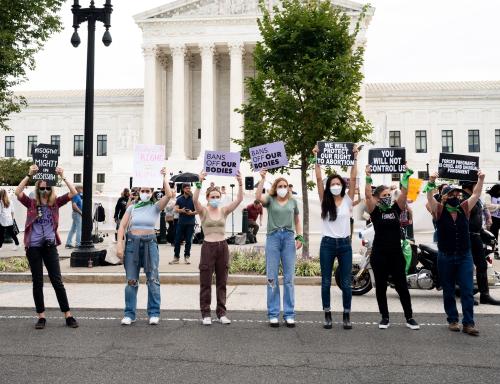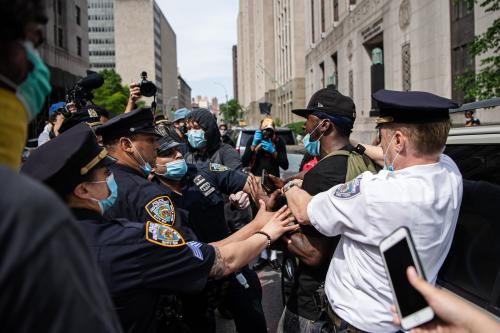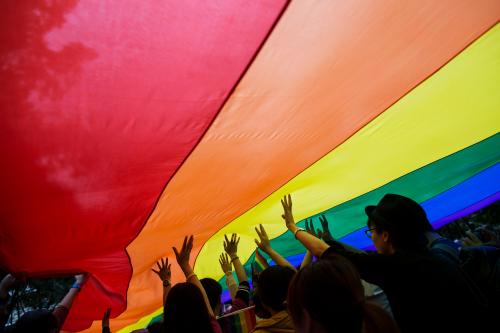What will be the effects of the Supreme Court’s twin rulings on gay marriage? My first-blush take is that the rulings will have a modest effect on legal doctrine but a major effect on cultural momentum.
The Supreme Court did two things today. First, it overturned the federal Defense of Marriage Act. The federal government will now have to recognize states’ same-sex marriages–mine among them–as valid for federal purposes. But, second, the court declined to make same-sex marriage a federal constitutional right. It punted on that issue. As a result, gay marriage will go back into effect in California (after a four-year hiatus), but nothing will change in other states.
California, however, is a big change all by itself. The state is so big that it takes the percentage of Americans living in gay-marriage states up to 30 percent, from 18 percent. Soon, when Illinois or a few other states come in, more than a third of the country, by population, will allow gay marriage. If that is not mainstream, nothing is.
Adding to that momentum is the reasoning underlying the DOMA ruling. The country has a long tradition of federal deference to states on family issues. To override that tradition, said the court, Congress needs a good reason. The reasons cited in support of DOMA, the court concludes, aren’t good enough. As a practical matter, although not doctrinally, the court seems to imply that a law discriminating against gays–whether by excluding them from marriage or, implicitly, by doing something else–is presumed guilty of being based on animus until proven innocent, and so its constitutionality is going to be suspect.
Meaning what, exactly? An interesting discussion of that question ensues between two dissenters, Chief Justice John Roberts and Associate Justice Antonin Scalia–an argument that is more social than legal. Roberts emphasizes that, as a legal matter, the majority’s holding struck down DOMA on narrow, fairly technical grounds: as a violation of a principle of federalism that has few other real-world applications. Limiting the holding to cases where Washington intrudes on state prerogatives will be easy for courts to do, says Roberts.
Don’t kid yourself, retorts Scalia. The application may be narrow, but the reasoning is broad. Five members of the Court have clearly signaled their sympathies, and they have raised the bar for politicians and voters who want to distinguish between gay and straight in American life.
Which judge is right? Both. The decision does not, as a purely legal matter, advance the gay-equality movement very much. But it accepts, indeed embraces, the worldview implicit in that movement. In this pair of cases, the Court indicates that it will not lead the parade for gay rights, but it will cheer from the sidelines.
The fight is not over. States that have enacted gay marriage so far are “blue”: predominantly liberal and Democratic. Most red states have laws or constitutional amendments banning gay marriage, and, what is more important, they also have electorates with majorities against gay marriage. By refusing to override those majorities, the court green-lighted the continuation, probably for a decade or more, of state-by-state battles over marriage. But the DOMA and California decisions both add to marriage equality’s remarkable social momentum. Few can doubt, at this point, where the Court and the country are headed.



Commentary
Supreme Court Tips the Gay Marriage Scales
June 26, 2013